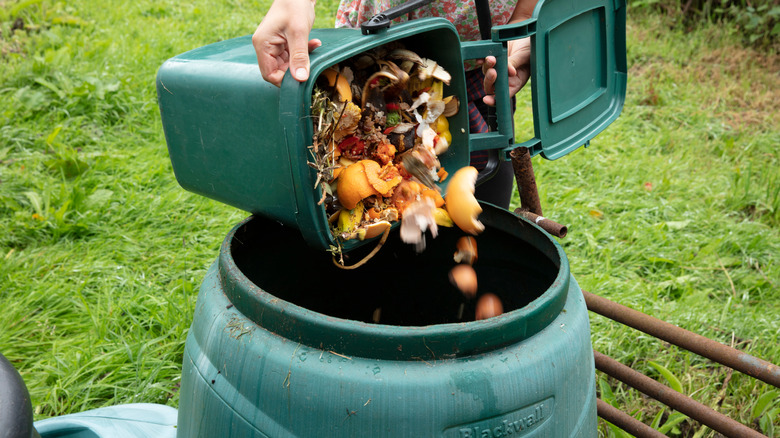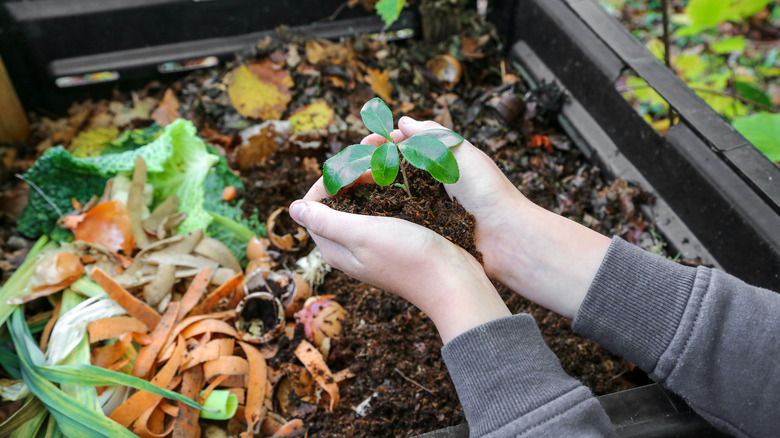Why You Should Never Compost Meat
Over the past year, the view that you should compost meat seems to have taken hold. The idea may be technically correct to a degree, but it is not something you should attempt to do. Still, there are many advocates for composting meat. Compost Obsession, for example, says that since meat is an organic product, it lends itself to composting. That said, the piece recognizes that pests may be more attracted to the smell of meat; it may spread E. coli if it doesn't decompose quickly enough and smells.
You can even find guides for composting meat in more widely read sources like SFGate. They recommend chopping the meat into small pieces that you mix with sawdust. Bury a small amount in a worm bin and for the next few months, check the temperature in case it gets too hot, indicating a significant nitrogen presence. If you don't have a worm bin, hide the meat deep in regular compost waste so that the smell does not attract scavengers. However, it is advised that you don't do this, and you especially refrain in densely populated areas unless you are already experienced in composting.
Why you shouldn't compost meat
The Michigan State University Extension acknowledges that there are pervasive rules against composting meat, eggs, and dairy and that you can compost all of these products. The issue is that animal products can host salmonella and E. coli which can contaminate the whole compost. If you use the compost as fertilizer, the product you grow can become infected. To ensure that diseases don't develop, you have to follow a hot composting process, which Michigan State University defines as when the internal temperature of the compost pile reaches between 130 and 160 degrees Fahrenheit for 5 days.
Hot composting, also known as the Berkeley method of composting, requires mixing carbon and nitrogen components in the compost, per Soraya Foundation. Carbon components can include sawdust, dried leaves, or cardboard, and nitrogen inhabits manure, fruit scraps, and other leafy materials. Wet the materials and add an activating ingredient, like urine or old compost. After five days, turn the compost inside out. Over the next few days, the compost should reach the right temperature. If it's too hot, white mold will form, but this can be solved by chucking sawdust at it. In the following days, you should continue to turn your compost every other day until the eighteenth day of the whole process. Then it should be completed.

